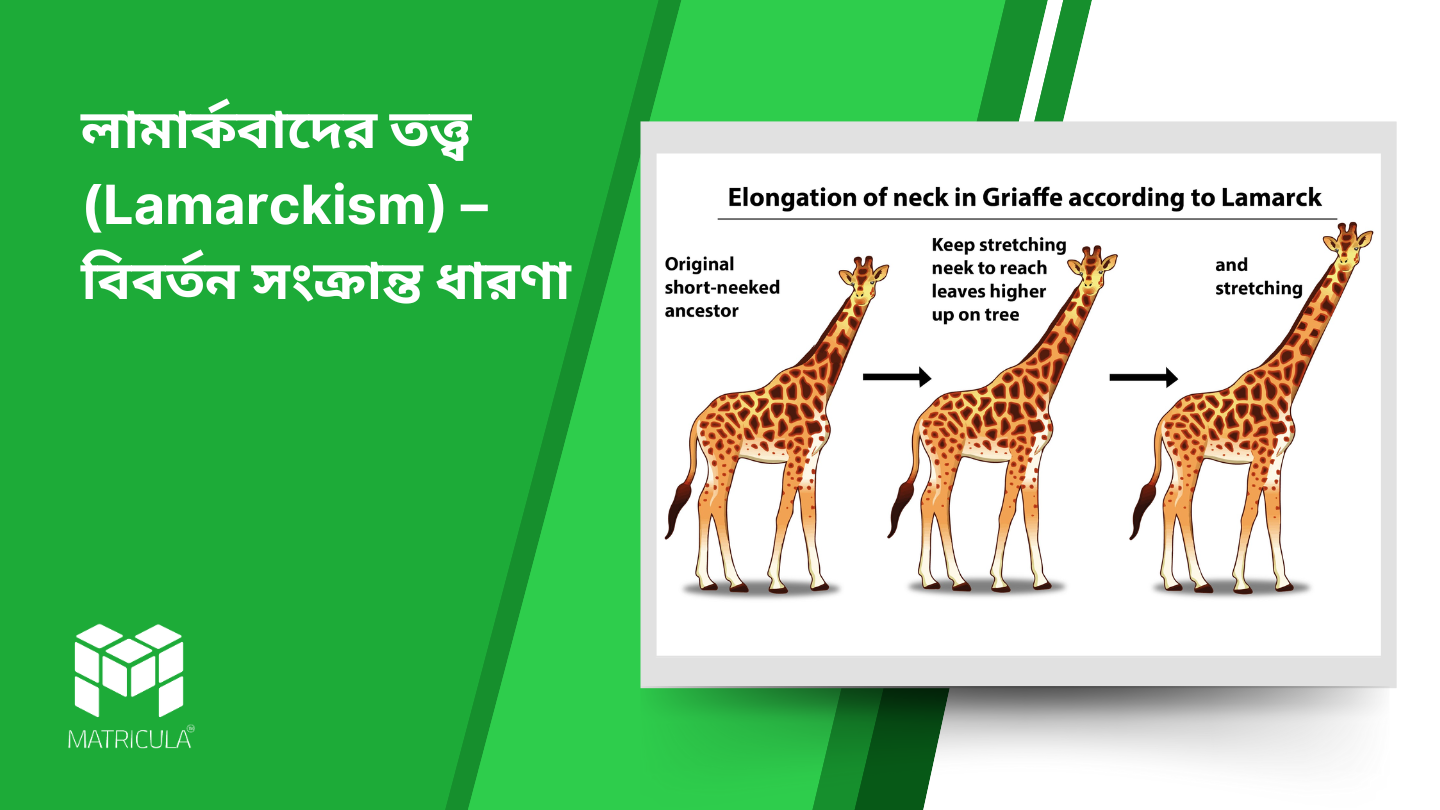Introduction
Evolution is a fundamental concept in biology that explains how organisms gradually change over generations, leading to the development of new characteristics. French biologist Jean-Baptiste Lamarck proposed one of the earliest theories of evolution in 1809, known as Lamarckism. According to Lamarck, changes in the environment, use and disuse of organs, and inheritance of acquired characteristics contribute to the formation of new species.
This article discusses the four main principles of Lamarck’s theory of evolution:
- Influence of the Environment
- Law of Use and Disuse of Organs
- Law of Inheritance of Acquired Characteristics
- Origin of New Species
1. Influence of the Environment
Lamarck emphasized that the environment plays a crucial role in shaping organisms. Changes in environmental conditions force organisms to adapt by modifying their structure or behavior. These modifications help them survive and reproduce more effectively.
Example:
- The elongated neck of a giraffe is believed to have developed due to its need to reach higher branches for food in an environment where lower vegetation was scarce.
| Factor | Impact on Organisms |
| Climate change | Adaptation in body covering (e.g., fur growth in cold regions) |
| Food availability | Modification of feeding structures (e.g., beak shape in birds) |
| Habitat change | Development of new survival skills (e.g., webbed feet in aquatic birds) |
2. Law of Use and Disuse of Organs
Lamarck proposed that organs that are frequently used develop and strengthen, while those that are not used gradually weaken and disappear over generations. This concept suggests that an organism’s lifestyle directly influences its physical structure.
Example:
- Giraffe’s neck: Originally short, but constant stretching to reach higher branches led to its elongation over generations.
- Flightless birds: Ancestors of ostriches could fly, but as they adapted to a terrestrial lifestyle, their wings became vestigial.
| Used Organs (Developed) | Disused Organs (Reduced/Disappeared) |
| Stronger leg muscles in horses due to running | Vestigial hind limbs in whales |
| Larger claws in burrowing animals | Reduced eyesight in cave-dwelling fish |
3. Law of Inheritance of Acquired Characteristics
Lamarck suggested that traits acquired during an organism’s lifetime can be passed on to its offspring. He believed that modifications developed in response to environmental changes would be inherited by future generations, leading to permanent evolutionary changes.
Example:
- A blacksmith’s muscular arms were thought to be inherited by his children.
- If a giraffe stretched its neck during its lifetime, its offspring would be born with a slightly longer neck.
| Acquired Characteristic | Expected Inheritance (According to Lamarck) |
|---|---|
| Muscular development due to exercise | Offspring with stronger muscles |
| Thickened skin due to exposure to heat | Next generation with tougher skin |
🚨 Modern genetics disproves this idea, as acquired traits do not alter an organism’s DNA and, therefore, are not inherited.
4. Origin of New Species
According to Lamarck, gradual accumulation of acquired traits over generations leads to the formation of new species. Continuous adaptations in response to environmental conditions eventually make organisms so different from their ancestors that they form a separate species.
Example:
- Giraffes evolved from shorter-necked ancestors by gradually acquiring longer necks.
- Aquatic mammals like whales possibly evolved from land-dwelling ancestors that adapted to marine life.
| Original Organism | New Adapted Form |
| Land-dwelling mammals | Aquatic mammals (whales) |
| Short-necked giraffes | Long-necked giraffes |
Limitations of Lamarckism
While Lamarck’s theory was groundbreaking, modern science has largely disproven some of his ideas. The discovery of genetics and DNA inheritance showed that only genetic mutations and natural selection drive evolution, not acquired characteristics.
| Lamarck’s Idea | Modern Understanding |
| Acquired traits are inherited | Only genetic traits are inherited |
| Organisms adapt during their lifetime | Adaptations occur over generations through natural selection |
Lamarck’s theory of evolution was one of the earliest attempts to explain how species change over time. While some aspects, like the role of the environment in adaptation, remain relevant, his idea of inheritance of acquired traits has been replaced by Darwin’s theory of natural selection and modern genetics.Despite its limitations, Lamarckism played a crucial role in shaping evolutionary biology, paving the way for further discoveries in the field.


